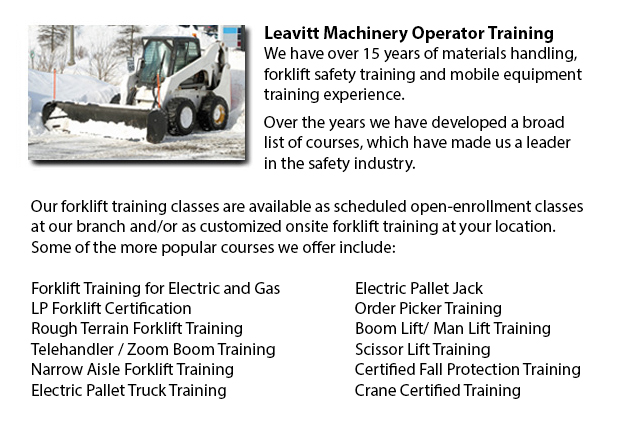
Prince George Skid Steer Ticket - The lift arms on the skid-steer loader are located beside the driver together with pivots at the back of the driver's shoulders. These features makes the skid-steer loader different as opposed to the traditional front loader. Due to the operator's nearness to moving booms, early skid loaders were not as safe as conventional front loaders, specially in the operator's entry and exit. Modern skid-steer loaders now have many features to protect the driver like fully-enclosed cabs. Like various front loaders, the skid-steer model could push materials from one location to another, could load material into a trailer or a truck and can carry material in its bucket.
Operation
There are numerous times where the skid-steer loader can be utilized instead of a large excavator on the jobsite for digging holes from the inside. To begin, the loader digs a ramp to be utilized to excavate the material out of the hole. As the excavation deepens, the equipment reshapes the ramp making it longer and steeper. This is a particularly functional way for digging beneath a structure where there is not sufficient overhead clearance for the boom of a big excavator. Like for instance, this is a common situation when digging a basement under an existing house or building.
The skid-steer loader accessories add much flexibility to the machinery. For instance, traditional buckets on the loaders could be replaced accessories powered by their hydraulics consisting of pallet forks, backhoes, tree spades, sweepers, mowers, snow blades and cement mixers. Some other popular specialized buckets and attachments include wheel saws, snow blades, trenchers, angle booms, dumping hopper, wood chipper machines, grapples, tillers and stump grinders rippers.
History
In 1957, the first front-end, 3-wheeled loader was invented in Rothsay, in the state of Minnesota by brothers Louis and Cyril Keller. The brothers invented the loader to be able to help a farmer mechanize the process of cleaning turkey manure from his barn. This particular equipment was light and compact and consisted of a back caster wheel which enabled it to maneuver and turn around within its own length, allowing it to execute similar jobs as a conventional front-end loader.
The Melroe brothers of Melroe Manufacturing Company in Gwinner, N.D. purchased in the year 1958, the rights to the Keller loader. The company then employed the Keller brothers to assist with development of the loader. The M-200 Melroe was the result of this partnership. This particular model was a self-propelled loader which was launched to the market during nineteen fifty eight. The M-200 Melroe featured a 12.9 HP engine, a 750 lb lift capacity, two independent front drive wheels and a rear caster wheel. By the year 1960, they replaced the caster wheel with a back axle and launched the very first 4 wheel skid steer loader that was referred to as the M-400.
The term "Bobcat" is used as a generic term for skid-steer loaders. The M-400 soon after became the Melroe Bobcat. The M-440 version was powered by a 15.5 HP engine and has rated operating capacity of 1100 lbs. The business continued the skid-steer development into the middle part of the 1960s and introduced the M600 loader.
-
Prince George Telehandler Operator Training
Prince George Telehandler Operator Training - Telehandler forklifts or Telescopic Handler forklifts are common industrial machines found in various construction industry settings. The telehandler is a useful machinery and makes for a valuable tool wh... More -
Skid Steer Loader Certification in Prince George
The engine powered skid-steer loader comprises a small and rigid frame, equipped with lift arms that could attach to many industrial attachments and tools to execute several labor saving tasks. Normally, skid-steer loaders are four-wheel drive vehicl... More -
Prince George Telehandler License
Prince George Telehandler License - The telescopic handler or telehandler is a generally utilized machine in agricultural and industrial applications. This machine is the same in look to a forklift and also works in a similar manner, although telehan... More -
Prince George Manlift Ticket
Prince George Manlift Ticket - The Elevated Platforms and Manlifts Certification course helps to provide the needed training on the work practices, safe operating procedures, rules and regulations regarding the everyday activities for the operators o... More -
Prince George Manlift Operator Training
Prince George Manlift Operator Training - A specialized kind of hydraulic platform is referred to as an aerial lift or a man lift. It is designed to hoist an individual vertically up and down and thus, is likewise called a vertical personnel lift. Th... More -
Prince George Forklift Safety Training
Prince George Forklift Safety Training - Individuals wanting work in industries that utilize forklifts have to undergo a forklift safety training course prior to becoming a certified operator of a lift truck. There are many ways to go about obtaining... More -
Prince George Boom Lift Certification
Prince George Boom Lift Certification - The use o elevated work platforms allow for maintenance operations and work to be performed at elevated work heights which were otherwise unreachable. Workers making use of boom lifts and scissor lifts could be... More -
Prince George Crane Training Schools
Prince George Crane Training Schools - We have designed various programs for Mobile Crane Operation at our Crane Training Schools. These programs are recommended for the skilled operator who needs certification or re-certification, and for inexperien... More

Forklift Certification Prince George
TOLL FREE: 1-888-254-6157
Prince George, British Columbia
forkliftcertificationprincegeorge.com
Email Us
About Us


